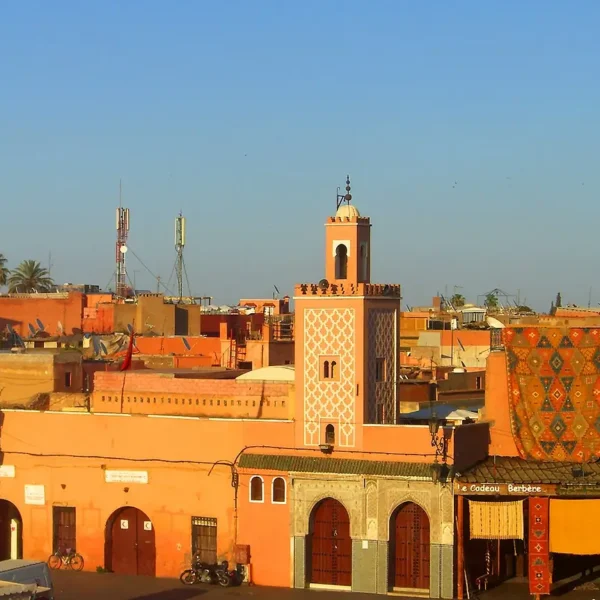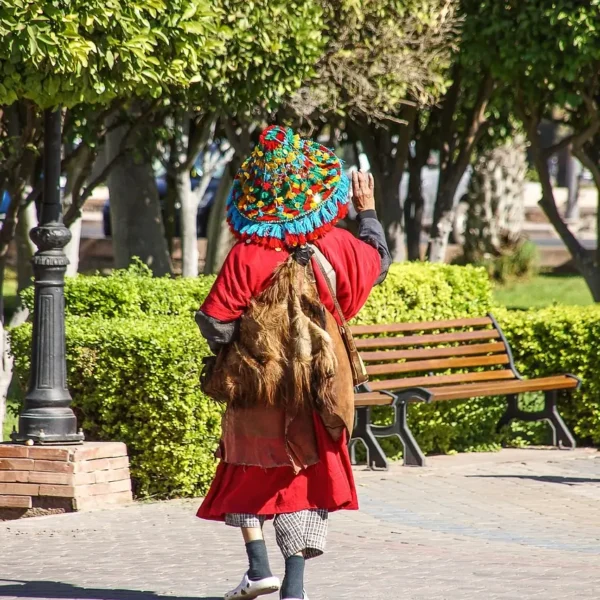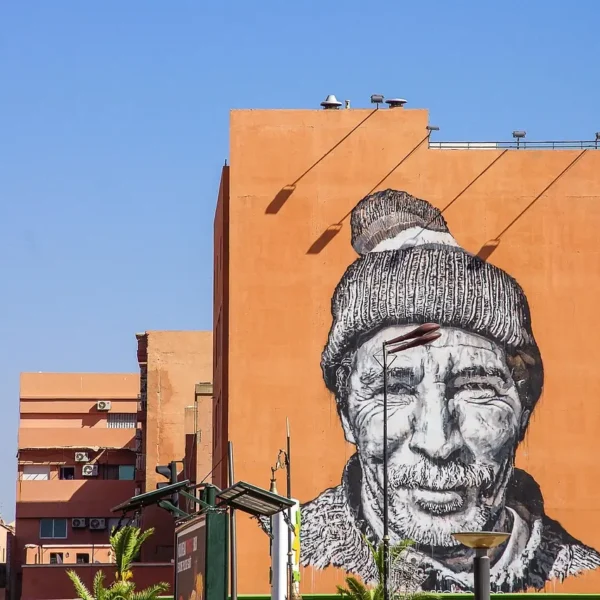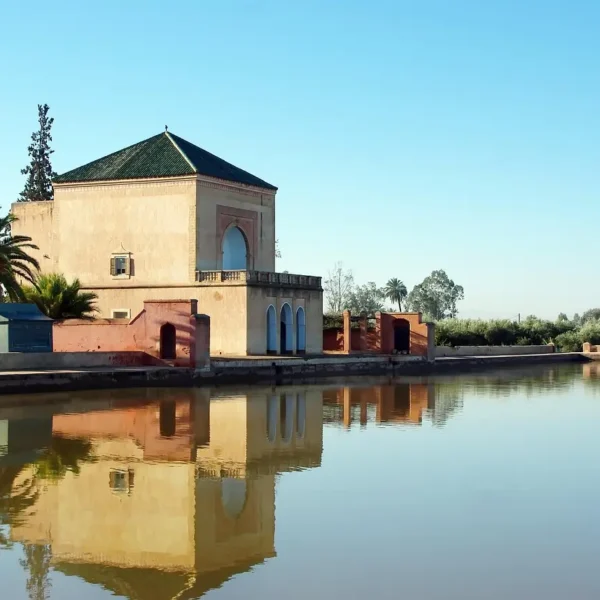



Marrakech
Cities of Marrakech: Your Complete Guide to Morocco’s Imperial Jewel
Introduction: Discovering the Magic of Marrakech
Have you ever wondered what it feels like to step into a living, breathing fairy tale? Welcome to Marrakech, where ancient history dances with modern luxury, and every corner tells a story that’s been unfolding for nearly a thousand years.
But here’s something that might surprise you – when we talk about the “cities of Marrakech,” we’re not referring to separate municipalities. Instead, we’re exploring the distinct districts that make up this incredible imperial city, each with its own personality, charm, and unique attractions.
Think of Marrakech as a beautiful tapestry woven from different threads – the ancient Medina with its maze-like souks, the French-influenced Gueliz district, the luxurious Hivernage quarter, and the peaceful Palmeraie oasis. Together, they create Morocco’s most captivating destination.
“Marrakech is not just a city; it’s an experience that awakens all your senses and leaves an indelible mark on your soul.”
Where is Marrakech? Understanding Morocco’s Red City Location
Geographic Position and Regional Context
So, where is Marrakech exactly? This enchanting city sits in the heart of Morocco, about 150 miles southwest of the capital, Rabat. Nestled against the dramatic backdrop of the snow-capped Atlas Mountains, Marrakech occupies a strategic position that has made it a crossroads of culture and commerce for centuries.
Located in the Marrakech-Safi region, the city serves as the economic and cultural hub of central Morocco. Its position at the foothills of the High Atlas Mountains gives it a unique climate and stunning scenery that sets it apart from other Moroccan cities.
The famous red walls that give Marrakech its nickname “The Red City” stretch for miles around the old city, creating a striking contrast against the blue sky and green palm groves. These terracotta-colored ramparts aren’t just beautiful – they’re a UNESCO World Heritage site that tells the story of medieval Islamic architecture.
Climate and Best Times to Visit
Marrakech enjoys a semi-arid climate that’s generally pleasant year-round, but timing your visit can make all the difference. The spring months (March to May) and autumn (September to November) offer the perfect balance of warm days and cool evenings.
Best Weather Windows:
- Spring (March-May): Average temperatures 20-26°C (68-79°F)
- Autumn (September-November): Average temperatures 18-28°C (64-82°F)
- Winter (December-February): Mild days, cool nights (8-20°C/46-68°F)
- Summer (June-August): Hot and dry (25-38°C/77-100°F)
The Historic Heart: Marrakech Medina (Old City)
UNESCO World Heritage Treasures
Step into the Medina, and you’re literally walking through history. This UNESCO World Heritage site is where the story of Marrakech began in 1070, and it remains the beating heart of the city today.
The Medina isn’t just old – it’s alive. This is where approximately 150,000 people still live and work, just as their ancestors did centuries ago. The iconic Jemaa el-Fnaa square transforms throughout the day like a theatrical performance. Morning brings fruit vendors and orange juice sellers, afternoon sees snake charmers and storytellers, and evening explodes with food stalls and traditional musicians.
Within the Medina’s walls, you’ll discover architectural marvels that will leave you breathless:
- Koutoubia Mosque: The city’s most famous landmark with its 253-foot minaret
- Bahia Palace: A 19th-century masterpiece of Moroccan architecture
- Saadian Tombs: Forgotten for centuries and rediscovered in 1917
- Ben Youssef Madrasa: An ancient Islamic college showcasing intricate tilework
Navigating the Ancient Maze of Souks
Getting lost in Marrakech’s souks isn’t just likely – it’s inevitable, and that’s part of the magic! These traditional markets form a labyrinthine network of narrow alleys where craftsmen have practiced their trades for generations.
Each souk specializes in different goods: Souk Semmarine for textiles, Souk Haddadine for metalwork, and Souk Cherratine for leather goods. The sensory overload is incredible – the sight of colorful spices piled high, the sounds of artisans hammering metal, the scent of cedar wood and leather, and the taste of fresh mint tea offered by welcoming merchants.
“In the souks of Marrakech, shopping becomes an art form, and every purchase tells a story of centuries-old craftsmanship.”
Pro Navigation Tips:
- Hire a local guide for your first visit
- Use major landmarks like mosques as reference points
- Download offline maps before venturing in
- Learn basic French or Arabic phrases for better interaction
Gueliz: Marrakech’s Modern French Quarter
Colonial Architecture and Contemporary Life
If the Medina is Marrakech’s ancient soul, then Gueliz is its modern heart. Built during the French Protectorate period (1912-1956), this district showcases a fascinating blend of colonial architecture and contemporary Moroccan life.
Gueliz feels like stepping into a different world – wide boulevards lined with palm trees, outdoor cafés serving espresso alongside traditional mint tea, and Art Deco buildings housing both international brands and local boutiques. The main artery, Avenue Mohammed V, connects the old and new cities, symbolically linking Marrakech’s past and future.
This is where many locals live their daily lives, away from the tourist hustle of the Medina. You’ll find university students at internet cafés, families shopping at modern supermarkets, and business people conducting meetings in sleek offices.
Shopping and Dining in New Marrakech
Gueliz offers a completely different shopping experience from the traditional souks. Here, you can browse air-conditioned malls, visit contemporary art galleries, and discover Moroccan designer boutiques that blend traditional craftsmanship with modern aesthetics.
The dining scene in Gueliz is equally diverse. From rooftop restaurants serving fusion cuisine to cozy bistros offering traditional tagines with a modern twist, this district caters to every palate and budget.
Must-Visit Gueliz Spots:
- Majorelle Garden: Yves Saint Laurent’s former residence and gardens
- Carré Eden Shopping Center: Modern retail therapy
- Théâtre Royal: Cultural performances and events
- Various art galleries showcasing contemporary Moroccan artists
Hivernage: The Luxury District
Upscale Hotels and Resorts
Welcome to Marrakech’s answer to Beverly Hills! Hivernage is where luxury meets tradition, and where international celebrities often choose to stay when visiting the Red City. This upscale district emerged in the mid-20th century as Marrakech’s premier luxury zone.
The architecture here is stunning – think palatial hotels with traditional Moroccan design elements, private villas with manicured gardens, and resort-style complexes that offer every conceivable amenity. Many of these properties feature traditional riads architecture but on a grand scale, with courtyards that could host royal gatherings.
What makes Hivernage special isn’t just the luxury – it’s how seamlessly it blends opulence with authentic Moroccan hospitality. Even the most exclusive hotels maintain the warmth and personal service that Morocco is famous for.
Entertainment and Nightlife Hub
When the sun sets, Hivernage comes alive with sophisticated entertainment options. This is where you’ll find Marrakech’s most exclusive nightclubs, elegant cocktail lounges, and cultural venues that host everything from traditional Gnawa music performances to international DJ sets.
The district also houses several world-class spas that combine traditional Moroccan hammam experiences with modern wellness treatments. After a day exploring the bustling souks, there’s nothing quite like unwinding with a traditional argan oil massage in a serene spa setting.
Palmeraie: The Oasis Escape
Desert Luxury and Golf Courses
Just a short drive from the city center, Palmeraie feels like another world entirely. This vast palm grove stretching over 54 square miles offers a green, peaceful escape from urban energy. Originally planted centuries ago, this oasis now hosts some of Morocco’s most exclusive resorts and recreational facilities.
The contrast is striking – one moment you’re in the bustling city, and the next you’re surrounded by thousands of palm trees with the Atlas Mountains providing a dramatic backdrop. Many luxury resorts here offer traditional Berber-style architecture with modern amenities, creating the perfect balance of authenticity and comfort.
Golf enthusiasts will be thrilled to discover several championship courses designed by legendary architects, set against stunning desert and mountain vistas. Imagine playing a round while peacocks stroll the fairways and the call to prayer echoes across the landscape.
Traditional Berber Villages
Within Palmeraie, you’ll discover authentic Berber villages where traditional life continues much as it has for generations. These communities offer visitors a chance to experience rural Moroccan culture, from traditional bread-making demonstrations to camel rides through palm groves.
Many visitors are surprised to learn that these aren’t tourist attractions – they’re real communities where families have lived for generations, maintaining traditional crafts, farming methods, and social structures.
What to Do in Marrakech: Top Attractions by District
Must-Visit Monuments and Museums
Each district of Marrakech offers unique attractions that showcase different aspects of the city’s rich heritage and contemporary culture.
Medina Highlights:
- Explore the architectural wonder of El Badi Palace ruins
- Visit the tranquil Menara Gardens with their reflecting pools
- Discover the Museum of Marrakech in a restored 19th-century palace
- Experience the spiritual atmosphere of the Koutoubia Mosque gardens
Gueliz Cultural Experiences:
- Wander through the enchanting Majorelle Garden
- Browse contemporary art at Gallery 127
- Attend performances at the Royal Theatre
- Shop for modern Moroccan design at Ensemble Artisanal
Beyond the City: For those seeking adventure beyond the city limits, consider day trips from Marrakech that showcase the diverse landscapes surrounding the Red City.
Cultural Experiences and Local Activities
“The real magic of Marrakech isn’t just in its monuments – it’s in the daily rhythms of life that have remained unchanged for centuries.”
Authentic cultural experiences await in every district:
Traditional Workshops: Learn pottery in the Medina, participate in cooking classes using fresh market ingredients, or try your hand at traditional carpet weaving.
Musical Heritage: Evening performances in Jemaa el-Fnaa feature traditional Gnawa music, while upscale venues in Hivernage host contemporary interpretations of classical Moroccan music.
Culinary Adventures: From street food tours in the Medina to wine tasting sessions featuring Morocco’s emerging vintages in Gueliz, the culinary scene spans all districts.
Where to Stay in Marrakech: Accommodation by Area
Medina Riads: Authentic Moroccan Experience
Staying in the Medina means immersing yourself in authentic Marrakech life. Traditional riads – historic houses built around central courtyards – offer an intimate glimpse into Moroccan architecture and hospitality.
These restored palaces feature intricate zellige tilework, carved plaster walls, and rooftop terraces with stunning views of the Atlas Mountains. Many riads are family-run establishments where personal service and local knowledge create unforgettable experiences.
Medina Accommodation Benefits:
- Walking distance to major attractions
- Authentic architectural experience
- Traditional Moroccan hospitality
- Unique photo opportunities
- Cultural immersion
Considerations:
- Limited vehicle access (luggage transport arranged)
- Can be noisy due to urban density
- Varying comfort levels depending on restoration quality
Modern Hotels in Gueliz and Hivernage
For travelers who prefer contemporary amenities with Moroccan flair, Gueliz and Hivernage offer international hotel standards with local character.
These accommodations typically feature air conditioning, WiFi, fitness centers, and swimming pools – amenities that might be limited in traditional riads. Many also offer shuttle services to the Medina and major attractions.
Modern District Benefits:
- Contemporary amenities and services
- Easy vehicle access and parking
- Proximity to modern restaurants and shopping
- Often more budget-friendly options
- Suitable for business travelers
Is Marrakech Safe? Travel Safety Tips and Insights
General Safety Guidelines for Tourists
Let’s address the elephant in the room – is Marrakech safe for visitors? The short answer is yes, Marrakech is generally very safe for tourists, but like any major city, it requires common sense and awareness.
Morocco has a strong tourism infrastructure, and local authorities work hard to ensure visitor safety. The majority of travelers experience no significant problems, and Marrakech welcomes millions of international visitors annually.
General Safety Practices:
- Keep valuables secure and don’t display expensive items openly
- Use official taxis or recommended transportation services
- Stay in groups when exploring at night
- Respect local customs and dress codes
- Keep copies of important documents
Area-Specific Safety Considerations
Different districts have different considerations:
Medina Safety:
- Easy to get lost – carry contact information for your accommodation
- Persistent vendors – polite but firm declining is acceptable
- Narrow streets – be aware of motorbikes and donkey carts
- Evening activities – stick to well-lit, busy areas
Modern Districts (Gueliz/Hivernage):
- Generally very safe with good lighting and security
- Standard urban precautions apply
- Tourist police presence in major areas
- Well-maintained infrastructure
Palmeraie:
- Resort areas have excellent security
- Rural areas require local guides for optimal safety
- Wildlife awareness (though encounters are rare)
For comprehensive travel planning and local expertise, consider booking with experienced operators who understand regional safety protocols and can provide cultural and heritage tours with knowledgeable local guides.
Getting Around the Cities of Marrakech
Transportation Options Between Districts
Navigating between Marrakech’s different districts is easier than you might think, with several transportation options to suit every budget and preference.
Petit Taxis (Small Taxis): These red vehicles are perfect for trips within the city limits. They’re metered, affordable, and can accommodate up to three passengers. Drivers often speak basic English or French.
Grand Taxis: Larger vehicles (usually Mercedes) that can accommodate up to six passengers. These are ideal for longer trips or groups, though they’re typically more expensive than petit taxis.
Horse-Drawn Carriages (Calèches): A romantic and traditional way to travel, especially popular for evening tours. These are more of an experience than practical transportation, perfect for couples or special occasions.
Walking: The Medina is best explored on foot, while Gueliz is very walkable with wide sidewalks and pedestrian-friendly streets. However, distances between districts make walking impractical for cross-city travel.
Local Tips for Navigation
Language Helpers:
- “Medina” (meh-DEE-nah): Old city
- “Gueliz” (geh-LEEZ): New city/French quarter
- “Palmeraie” (pal-mer-EYE): Palm grove area
- “Hivernage” (ee-ver-NAHZH): Luxury district
Navigation Strategies:
- Use major landmarks as reference points
- Download offline maps before exploring
- Ask hotel staff for landmark-based directions
- Learn to recognize district characteristics
Cultural Navigation: Understanding local customs helps navigation go smoothly. Moroccans are incredibly helpful with directions, and asking for help often leads to wonderful conversations and local insights.
Frequently Asked Questions (FAQs)
Where is Marrakech Morocco exactly located?
Marrakech is located in central Morocco, approximately 150 miles (240 kilometers) southwest of the capital city, Rabat. The city sits at the foothills of the High Atlas Mountains, in the Marrakech-Safi region. Its strategic location has made it a crossroads between the Sahara Desert, the Atlas Mountains, and the Atlantic coast, contributing to its historical importance as a trading hub.
Is Marrakech safe for solo travelers?
Yes, Marrakech is generally safe for solo travelers, including women traveling alone. The city has a strong tourism infrastructure and welcomes millions of international visitors annually. However, solo travelers should exercise standard urban precautions: avoid displaying valuable items, stay in well-lit areas at night, use reputable transportation, and trust their instincts. Many solo travelers find Moroccans incredibly welcoming and helpful.
What’s the best area to stay in Marrakech?
The best area depends on your travel style and preferences:
- Medina: Choose this for authentic cultural immersion, traditional riads, and walking distance to major attractions
- Gueliz: Perfect for modern amenities, easy transportation access, and contemporary dining options
- Hivernage: Ideal for luxury accommodations, upscale dining, and sophisticated nightlife
- Palmeraie: Best for resort experiences, golf, and peaceful retreat from city energy
First-time visitors often prefer the Medina for cultural authenticity, while return visitors might explore other districts for different experiences.
How many days do you need in Marrakech?
A minimum of 3-4 days allows you to experience the main highlights of each district, but 5-7 days provides a more relaxed pace and deeper exploration. Here’s a rough itinerary breakdown:
- Day 1-2: Explore the Medina, souks, and major monuments
- Day 3: Discover Gueliz and Majorelle Garden
- Day 4: Experience Hivernage luxury and Palmeraie tranquility
- Day 5+: Take day trips to nearby attractions or delve deeper into specific interests
Many travelers combine their Marrakech visit with desert tours or exploration of other Moroccan cities for a comprehensive experience.
What currency is used in Marrakech?
The official currency is the Moroccan Dirham (MAD). While some tourist-oriented businesses accept euros or US dollars, you’ll get better rates and easier transactions using dirhams. ATMs are widely available throughout all districts, and credit cards are accepted at most hotels, upscale restaurants, and modern shops. However, cash is essential for souks, street food, taxis, and traditional establishments.
Money Tips:
- Exchange money at banks or official exchange offices for best rates
- Carry small bills for tips and small purchases
- Bargaining is expected in traditional markets
- Keep some cash for areas where cards aren’t accepted
Conclusion: Planning Your Perfect Marrakech Adventure
Marrakech isn’t just a destination – it’s a tapestry of experiences woven through distinct districts, each offering its own flavor of Moroccan magic. From the ancient alleyways of the Medina where centuries-old traditions thrive, to the elegant boulevards of Gueliz where modernity meets tradition, to the luxury of Hivernage and the tranquility of Palmeraie, the cities of Marrakech offer something for every type of traveler.
Whether you’re drawn by the call to prayer echoing across red-walled courtyards, the aroma of tagines simmering in traditional restaurants, the vibrant colors of handwoven carpets in ancient souks, or the serene luxury of palm-fringed pools under desert stars, Marrakech delivers experiences that linger long after you’ve returned home.
The key to a perfect Marrakech adventure lies in embracing the city’s diversity. Don’t limit yourself to just one district – let your curiosity guide you from the bustling energy of Jemaa el-Fnaa to the peaceful luxury of Palmeraie, from the artistic treasures of Majorelle Garden to the architectural wonders of Bahia Palace.
“Marrakech doesn’t just occupy space on a map – it occupies a permanent place in the hearts of all who visit.”
Remember, the best way to experience the cities of Marrakech is with local knowledge and expertise. Whether you’re planning a short city break or an extended Moroccan adventure, consider connecting with local specialists who can help you discover the hidden gems and authentic experiences that make Marrakech truly unforgettable.
Ready to embark on your Marrakech adventure? The Red City awaits, with its ancient stories, modern comforts, and timeless hospitality ready to welcome you into its magical embrace.

